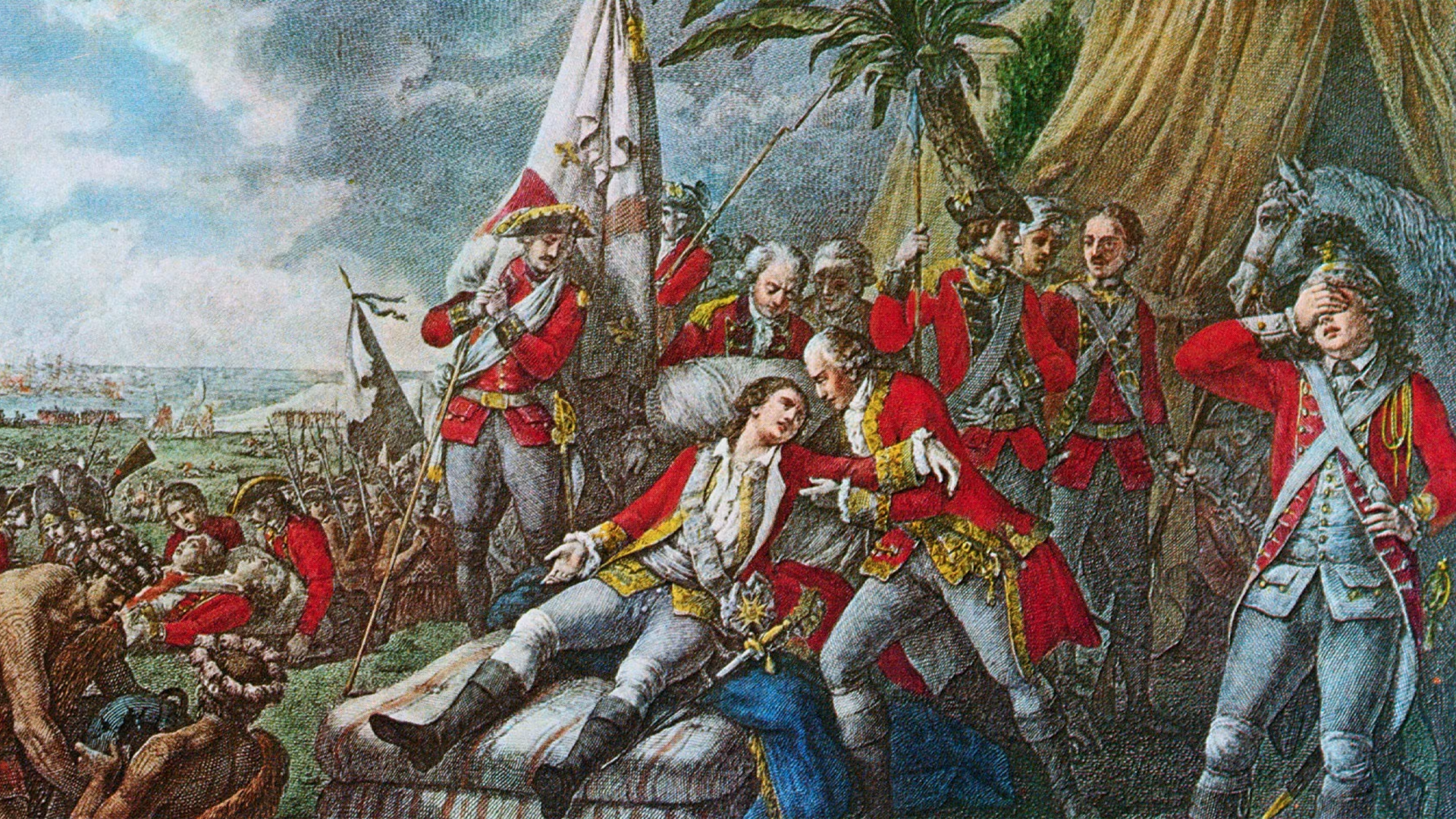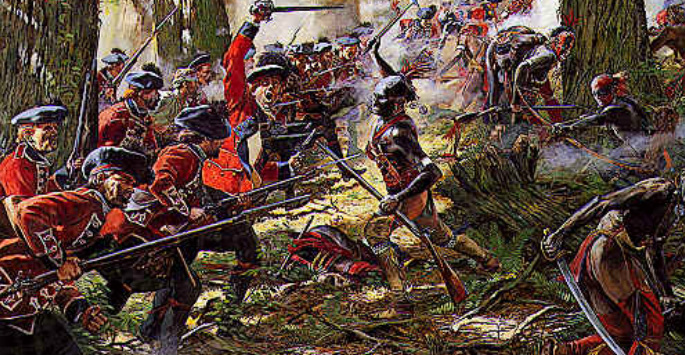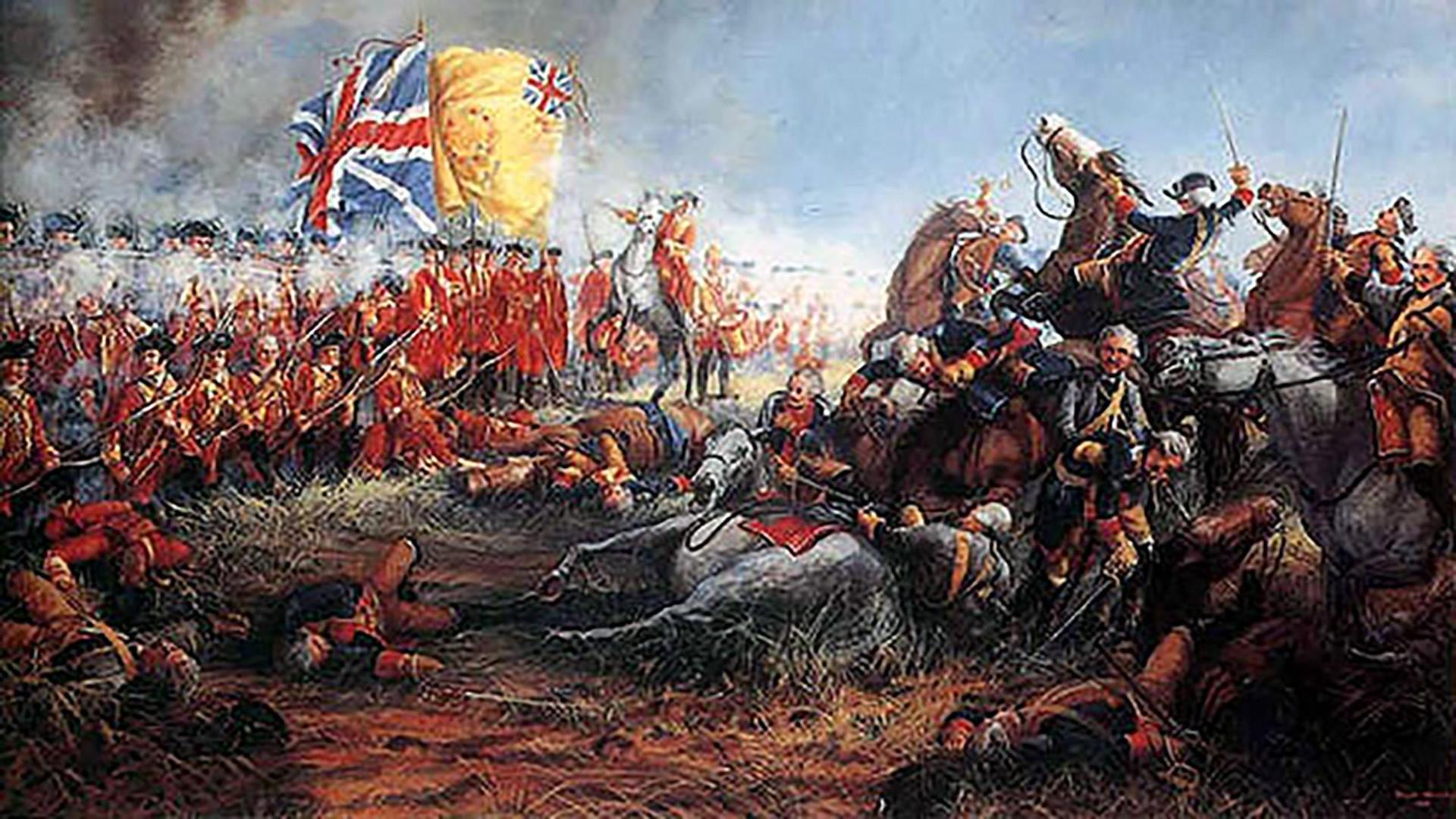The French and Indian War: The Battle for North America

British and French soldiers facing off in a forested battlefield with Native American allies during the French and Indian War.
The Dive
It’s the mid-1700s, and North America is a chessboard of rival empires. The British control the 13 colonies along the Atlantic, while France claims the vast forests and rivers stretching from Canada to Louisiana. Between them lies the Ohio River Valley—a rich, fertile land both nations desperately want. This is where the sparks of the French and Indian War begin to fly.
In 1754, a young and ambitious George Washington led a small Virginia militia to push the French out of the region. It didn’t go well. His surprise attack at Jumonville Glen—and the disastrous Fort Necessity retreat that followed—ignited a global conflict that soon spread far beyond the frontier. What began as a local squabble turned into the Seven Years’ War, fought across five continents.
Native American nations found themselves caught between these European powers. Some, like the Huron and Algonquin, sided with the French, who had long been their trading partners. Others, such as the Iroquois Confederacy, allied with the British to protect their own interests. For Indigenous nations, the war was as much about survival as it was about alliances.
Early on, the French dominated. With strong leadership from General Louis-Joseph de Montcalm and support from their Native allies, they won several victories—including the capture of British forts and the siege at Fort William Henry. But things changed when William Pitt took charge of Britain’s war strategy in 1757. He poured money and men into the fight, promising colonial militias rewards for their loyalty.
By 1759, the tide had turned. British forces, led by General James Wolfe, captured Quebec after a daring nighttime climb up the cliffs overlooking the city. It was a turning point—France’s power in North America crumbled soon after. With the fall of Montreal in 1760, French resistance collapsed completely.
The Treaty of Paris (1763) ended the war, redrawing the map of the continent. France gave up nearly all its North American territory, ceding Canada and lands east of the Mississippi to Britain. Spain handed over Florida but gained Louisiana in return. The British Empire now stretched from the Arctic to the Gulf of Mexico.
But victory came at a cost. Britain’s war debt had doubled, and King George III believed the American colonists should help pay the bill. New taxes—like the Stamp Act and Townshend Acts—soon followed, stirring outrage among colonists who argued there should be ‘no taxation without representation.’ What began as a fight against France quietly became the spark that would ignite the American Revolution.
For Native nations, the British takeover was devastating. Without their French allies, many Indigenous groups lost influence and faced increasing pressure from settlers pushing west. When the British stopped giving traditional gifts and restricted trade, frustration erupted into Pontiac’s Rebellion in 1763, a warning that conquest was not the same as peace.
The French and Indian War reminds us that every map tells a story of power, alliances, and consequences. It wasn’t just about land—it was about who got to shape the future of a continent. And in the war’s aftermath, the American colonies began to imagine a new kind of freedom.
Why It Matters
Understanding the French and Indian War helps us see how global events can shape local history. The war redrew borders, strained alliances, and set the stage for American independence. It also reminds us how the actions of a few—like a young George Washington—can change the course of nations.
?
Why did both France and Britain want control of the Ohio River Valley?
How did Native American alliances influence the outcome of the war?
Why did Britain’s victory create new problems instead of lasting peace?
What connections can you see between the French and Indian War and the American Revolution?
If you lived in one of the colonies in 1763, how might this war have changed your view of Britain?
Dig Deeper
The French and Indian War saw two European empires battle for control of North America—and introduced a young George Washington to the world stage.
The Seven Years’ War was a global conflict fought across five continents—and its outcomes shaped the modern world, including the American Revolution.
Related

American Revolutionary War: From Protest to a New Nation
How arguments over taxes and rights grew into an eight-year war—and how ideas, allies, and perseverance turned thirteen colonies into the United States.

The Regulator Movement: Backcountry Rebellion Before the Revolution
Long before the American Revolution, farmers in North Carolina were already fighting corruption and demanding justice.

Life and Society in the Colonial Carolinas
Explore the rise of plantation agriculture, slavery, class divisions, and the shaping of daily life in the colonial South—particularly in North Carolina and South Carolina.
Further Reading
Stay curious!

